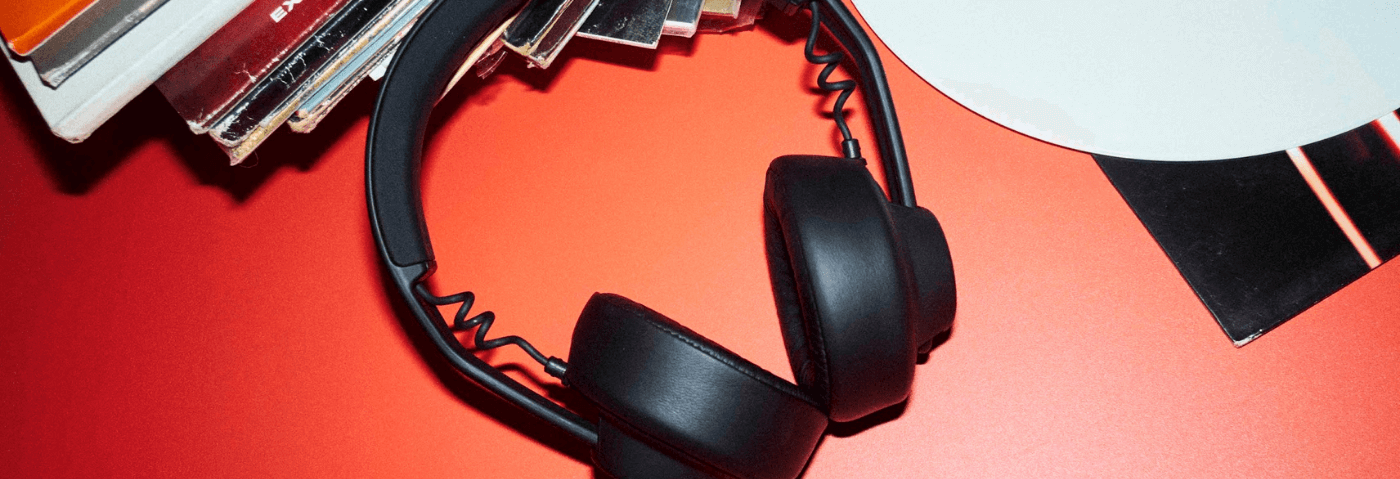Over ten years since the TMA-1s were released, AIAIAI is entering new territory with headphones designed specifically for producers. We spoke to the co-founder, Frederik Jørgensen, about how the TMA-2 Studio headphones stand out in their catalogue and the company commitment to responsible manufacturing.
AIAIAI are a company that has sat alongside rather than within pro-audio. With the release of their flagship TMA-1 in 2010, the Danish firm brought fresh design concepts and attractive marketing to headphones. It was during that time the market started to offer consumers something different away from the heritage headphone brands. The darling of the scene for many being Jimmy Ovine’s Beats By Dre. At the same time, however, AIAIAI also noticed a potential gap for DJs and specifically those working in electronic music.
Over the last decade, AIAIAI has released only a handful of products and double down their support and commitment to dance music and sustainability or as they rather put it ‘responsible development’. Furthermore, their enduring mix series has eye-catching alumni and it’s certainly not uncommon to see well-known artists using the TMA-2s behind the decks.
However, more recently AIAIAI has decided to make something for producers instead while remaining firmly committed to responsible manufacturing. We spoke with co-found Frederik Jørgensen to ask if this meant a compromise in design and functionality, how the TMA-2 studio sits alongside similarly priced competition and the challenges moving furthermore into traditional pro-audio.
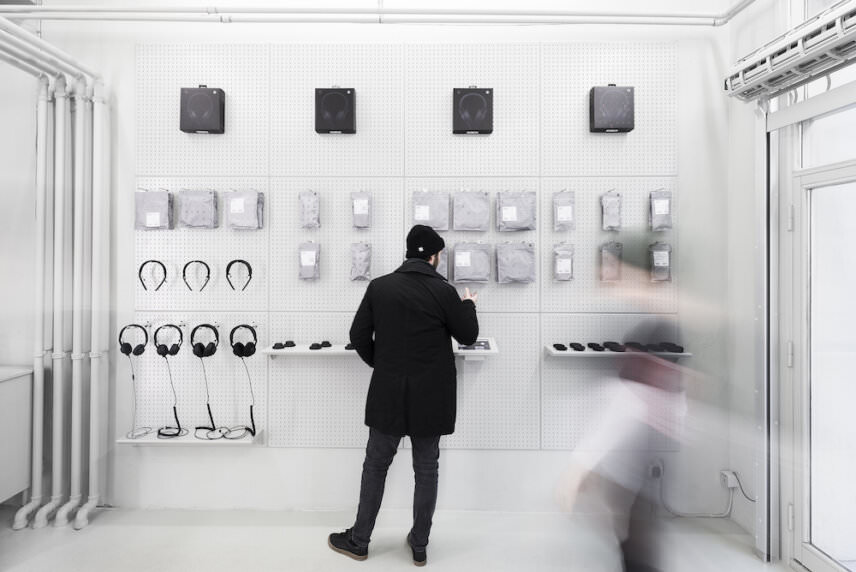
Frederik Jorgenson: I think as it’s something we grew up with, it’s quite a natural approach. I think a lot of it rests with the whole philosophy of functional design. With the designers, we work with, and if you look at Scandinavian designers broadly speaking, there is a tendency to look at design, not as an aesthetic art form, but as a way of solving problems in a clever way. Of course, you can make things look good but generally, at the end of the day, it is to solve a problem or add a purpose to a product.
Scandinavians are typically very focused on not adding unnecessary elements. We don’t need all the glitz and glamour on products that detract from the understanding of a product. We want to design products that are easy to understand and use.
The other concept is we try to work as sustainably as possible. I feel Scandinavians always want to create products that are long-lasting. Instead of just following a trend that’s often ephemeral, there is a design emphasis on something timeless, iconic and sustainable.
I admire your mantra ‘people need to buy less headphones’. This might seem counterintuitive to your bottom line but it’s admirable that a company makes small, or big steps, towards a cleaner future. It’s quite a bold statement in your position. Presumably, you must be sure that the industry as a whole will be playing catch up while certain companies lead the way?
Well, we’re not speculating a lot on that. In general, 99% of what we do is really based on what we think is right and not relative to what we believe others will do. I hope the whole world will catch up with this thought.
I do sincerely believe the world buys too much stuff, including headphones. We can talk about better, more recycled materials, more sustainable materials and so on but at the end of the day, the best thing we can do is to buy better things but with a lower frequency. That is definitely the most important thing.
It’s my view that there’s a lot of deceiving. It might not be the right word but I’ll use that! A lot of companies, like clothing companies create new collections every week stating they’re made with recycled cotton or whatever. But that doesn’t mean what it’s meant to mean as it’s still so far from being sustainable. It’s a little bit smoke and mirrors.
I remember reading an article and the question was – what is more sustainable? Buying an organic apple or not buying an apple at all? The majority chose buying an organic apple. In other words, it’s better to consume something recycled than not consume something at all, which really shows the misconception.
I do believe the world buys too much stuff, including headphones. We can talk about better, more recycled materials, more sustainable materials and so on but at the end of the day, the best thing we can do is to buy better things but with a lower frequency. That is definitely the most important thing.
How closely aligned are your products with your own philosophy and interests?
Everything we do is done purely from our interests, passion and beliefs.
I think that shows when we launched the TMA-1. It was very different from what was on the market at the time. I think a lot of the success was also credited to having this minimal design, non-branded and the rubber coating.
We can only do things that we really love ourselves. And again, we’re doing products in a sector we love.
We regularly ask our community for ideas and feedback because they’re the real experts. I think it’s that mix of those two, that we have a strong belief in what we want to create but we’re also very open for inspiration from the outside.
Do you think we’re in danger of reaching a point where there are very few original headphone ideas, concepts or sounds left to explore? Is that a problem?
I don’t think so anymore. As the industry has digitalized, new opportunities have opened up such as wireless connectivity.
There’s a lot more technology that can now somehow be part of the headphone mission. As everything goes wireless we ask how will that change how headphones interact with all the other products? Many music products remain wired so as wireless becomes more ubiquitous, it will continue to open up new opportunities.
On the audio side, I’m not so sure we’re going to do better products in ten years purely on audio than what you can find today. I can’t currently see where that improvement would derive from. Speakers that were made 50 years ago for some are still some of the best on the market. However, I think the product as a whole, the UX, the connection to other products and so on is where a lot of things will develop.
Is there a time in your mind when AIAIAI’s catalogue will be complete?
No, definitely not.
I don’t think that’s possible in any category, and actually, on the contrary, I think we’ve been a little bit silent on the product development side for some years as we weren’t really following the digital and wireless wave. That is really our guiding star right now, that new processes of music creation will call for new audio products which AIAIAI are really focused on developing.
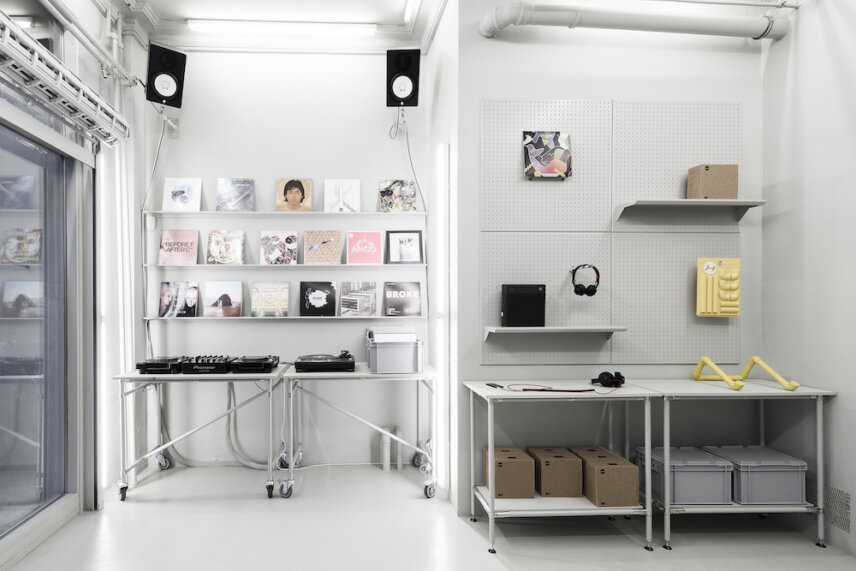
What’re the next 10 years looking like for the headphone market?
From our view, I think you’ll see more dynamic products and versatile products. I think we already approached it with modularity in that you need to create a product that can adapt to your changing processes. And it’s not a static process to create music anymore. It’s a much more dynamic process. And that’s what we’re trying to solve by applying different technologies to these processes.
Do you have a favourite AIAIAI product?
Oh, that’s like Sophie’s choice, right? That’s like who’s your favourite child?!
I tend to use the more lightweight, simple headphones because I use them on my bike while commuting. With the new products, it would definitely be the new Studio XE. That will be the choice for me because it’s a little bit more slim, lightweight, and so on. For commuting, I think the very large over the ear, highly isolating, is a little dangerous when cycling!
Tell us a little bit about how to make headphones from recycled vinyl. Where is the recycled vinyl source from?
All the recycled vinyl comes from Ninja Tune. I think a lot of labels are facing issues and concerns about unsold vinyl piling up in warehouses. Having been friends with Ninja Tune for many years, we’d always talked about doing a project together, and they were inspired to do a headphone product. The challenge was to find an angle as we were not going to make a headphone with just a Ninja Tune logo on it.
They were in the middle of redefining their whole vision of being carbon neutral. And at the same time, we were thinking about how we could be more responsible. The idea was to mutually explore this and someone somewhere came up with: “Hey, why don’t we recycle vinyl?’
The vinyl is made from PVC. It’s not the easiest product to work with, but that also means it’s even more important to get it off of landfills! We just started exploring it and we eventually found a way to make it happen. For both parties, it was super purposeful, with a positive ‘can do’ attitude’. It was very much an opportunity to experiment, learn and find inspiration.
Is enough being done in pro-audio to combat waste?
I don’t think enough has been done anywhere to combat waste.
Pro-audio is not a space that’s leading any positive developments to be honest. Having said that, in general, there are worse industries as in pro-audio many products at least have a long lifetime. That is a good thing. Smartphones and clothing are far worse because people change them all the time and the previous gear/units are obsolete overnight. At least in pro-audio, a new product might sit alongside and even complement something in your studio.
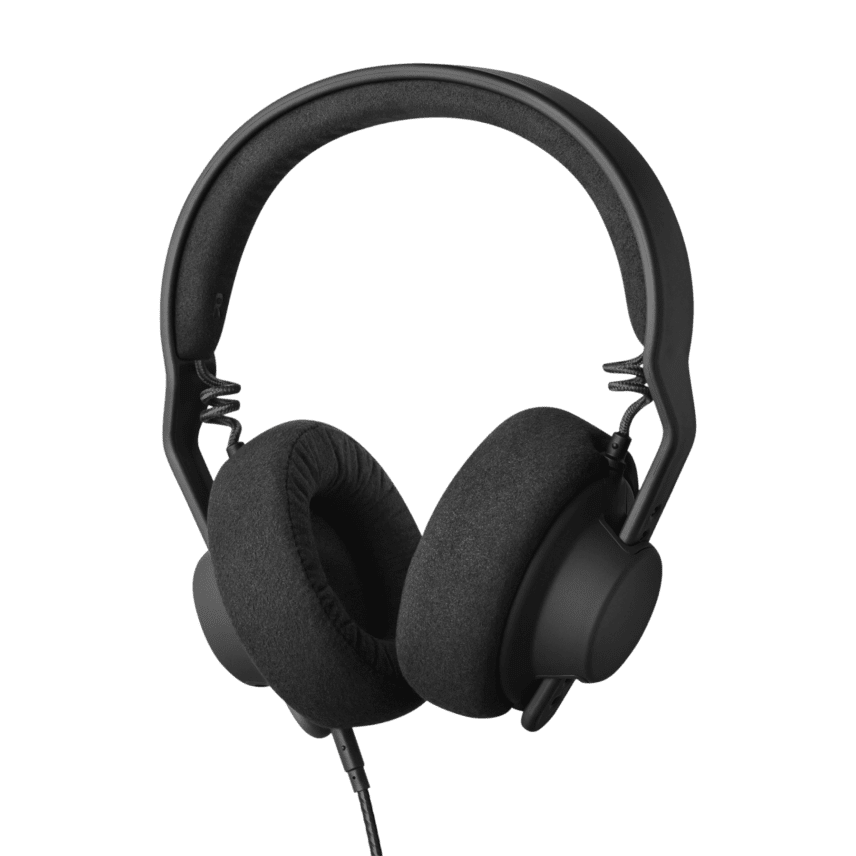
Were there any trade-offs in the design and the final concept of what you delivered?
That’s a very, very, very important part of all of this because the hierarchy of our approach to the products is very, very important.
The primary thing for both parties is to make the best possible product in functionality and quality-wise. And once we have got that, we try to do it the most responsible way we can.
The most important thing is to do the best product possible, and I think a clear reason for that. If we don’t create a product that’s strong enough to compete, then we can have the most eco-friendly product in the world, but if nobody is buying it as it’s not good enough, then we’re not really getting anywhere…
Therefore, to begin with, we have to create the best products and be as competitive as we can, but we also really focused on that it should always be better for customers to buy our product compared to others.
The short answer then would be no! There was no compromise at all. And if there had been, we wouldn’t have done it.
Can you describe what Alcantara is to our readers?
It’s a material that kind of resembles suede, but it’s recycled material. It’s much more durable and it’s really, really good at not absorbing things so it doesn’t get dirty and is extremely durable.
It’s a material that’s been used for many, many years in the car industry and furniture industry (to name just two) because it just lasts so long. It’s also super soft and great for headphones.
Can you tell us about the other materials, because you’ve made very specific choices like the vegan leather?
Our view is that this is currently the most responsible choice we can make. We don’t want to use cow leather or lambskin because even though it’s plastic, it’s still better for the environment to use vegan leather instead. We also think there’s an ethical thing there but that doesn’t stem from any personal dietary choices.
There’s a lot of product innovation right now. We have samples here with leather made from cactus, we have leather made from mushrooms, all these things because the industries are asking for increasingly clever and versatile product materials. AIAIAI are doing a lot of testing and a lot of things will change in the products over the years. It’s only just getting started.
The short answer then would be no! There was no compromise at all. And if there had been, we wouldn't have done it.
You’ve reduced the carbon footprint by 80%. Is that for this one product or the company as a whole?
Last year, we changed the packaging for our product, and with that, we reduced the carbon footprint of the packaging by 80%. That actually meant that we reduced the carbon footprint by almost 20%.
Packaging is a big deal. We’ve reduced it further since and now we do recycled material, we also reduced the size of the packaging. It’s not something we can tick off as done as it’s constantly evolving.
Is there a limit to how far this can go?
I guess there is a limit somewhere because I think, there is a chance we could be completely carbon neutral. But I don’t know. I think we’re far away from that limit, and for us, it’s very important to see this as a long-term process, a long-term commitment and a focus on the small things to get there.
We are deliberately not positioning ourselves as a sustainable company because I think no company is sustainable and humans are not sustainable. And it’s not like all products are not sustainable or anything like that. It’s more we’re trying to be more responsible. We’re trying to do better every time we have to make a decision. It’s half a per cent there, half a per cent there – many small steps in a marathon.
The TMA-2 Studio are the first headphones by AIAIAI with a focus on music producers as the intended user. Could you explain, technically, what stands them apart from your other products?
Well, a lot of it is sound because the sound configuration of, at least the DJ version that we had, it’s obviously very different. The use case is very different from a studio or a producer and in some ways. Overall the sound is completely different and far more neutral.
It’s better suited for mixing in long studio sessions and also for producers who tend to work in various environments and not just perfect studio setups.
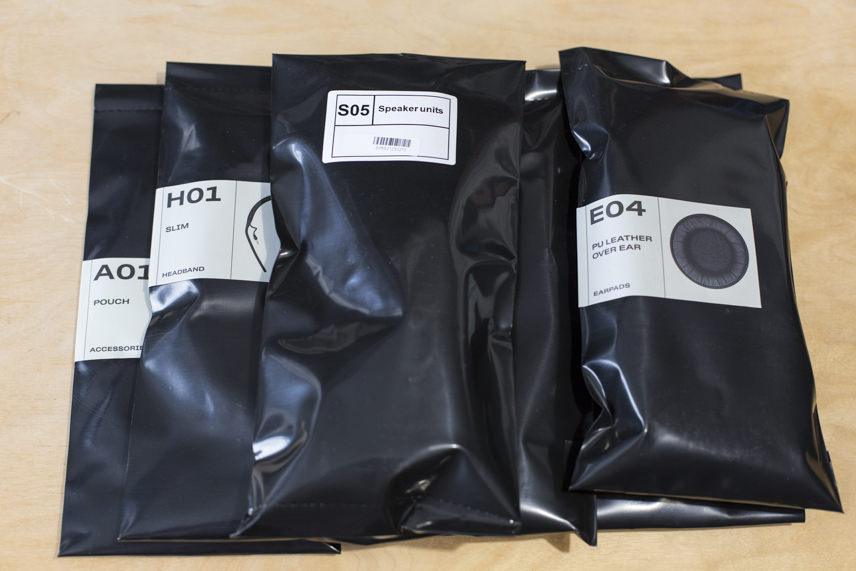
How would you position AIAIAI within the crowded marketplace that you are now entering?
There are multiple things to this. Firstly, we believe that with the brand, we differentiate ourselves, in that by using our products you’re part of something else culturally. We believe what we offer is more connected to the culture associated with music production.
Secondly, the product itself is more responsibly designed and you also have the modularity aspect that extends the longevity. You can exchange parts if they wear and tear, or if you change style musically, then there are multiple settings to accommodate. That’s a product feature that’s very different.
Thirdly, the cost is competitive at this price point when you consider what you’re getting. It’s more versatile and more dynamic than the heritage bands.
Are the AIAIAI team all DJs and producers? Is it a mix?
It’s definitely a mix!
We have product guys that are neither and are just engineers and audio technicians. We have community managers and content marketers who have their own independent labels. So, it is a mix and I really like that because again, I think that dynamic, where creativity is mixed with pure business backgrounds, can give you an edge.
Is there a favourite mix in your mix series?
I know that the favourite mix in the office was the one that Honey Dijon did! It was great to have her on board.
What’s the challenge of running a headphone company?
I think it’s a challenge for everyone who is doing hardware. It’s a challenge in business to be in, in general, because it’s so expensive to develop your product. That’s very much from a business perspective of course. It is very, very challenging the whole structure of doing it because doing new products costs so much money. So, being a small independent company, unfortunately, at least historically, we have not been able to launch products in the frequency we would like to because you would have to think about everything.
You have to really make it right every time. But I don’t know if there’s something specifically challenging by doing it. I mean, of course, it is challenging to be a small player here because we have to earn all the awareness we get.
Sometimes you wonder if would be easier if somebody would just give us £10 million and we push on but perhaps not having this helped shaped good decisions.
What’s one thing about AIAIAI people might be surprised to know?
That the size of the company is small. We’re a small, independent company. We’re just 15 people. As we are stocked worldwide there is a tendency to think we’re much bigger but we’re not!
